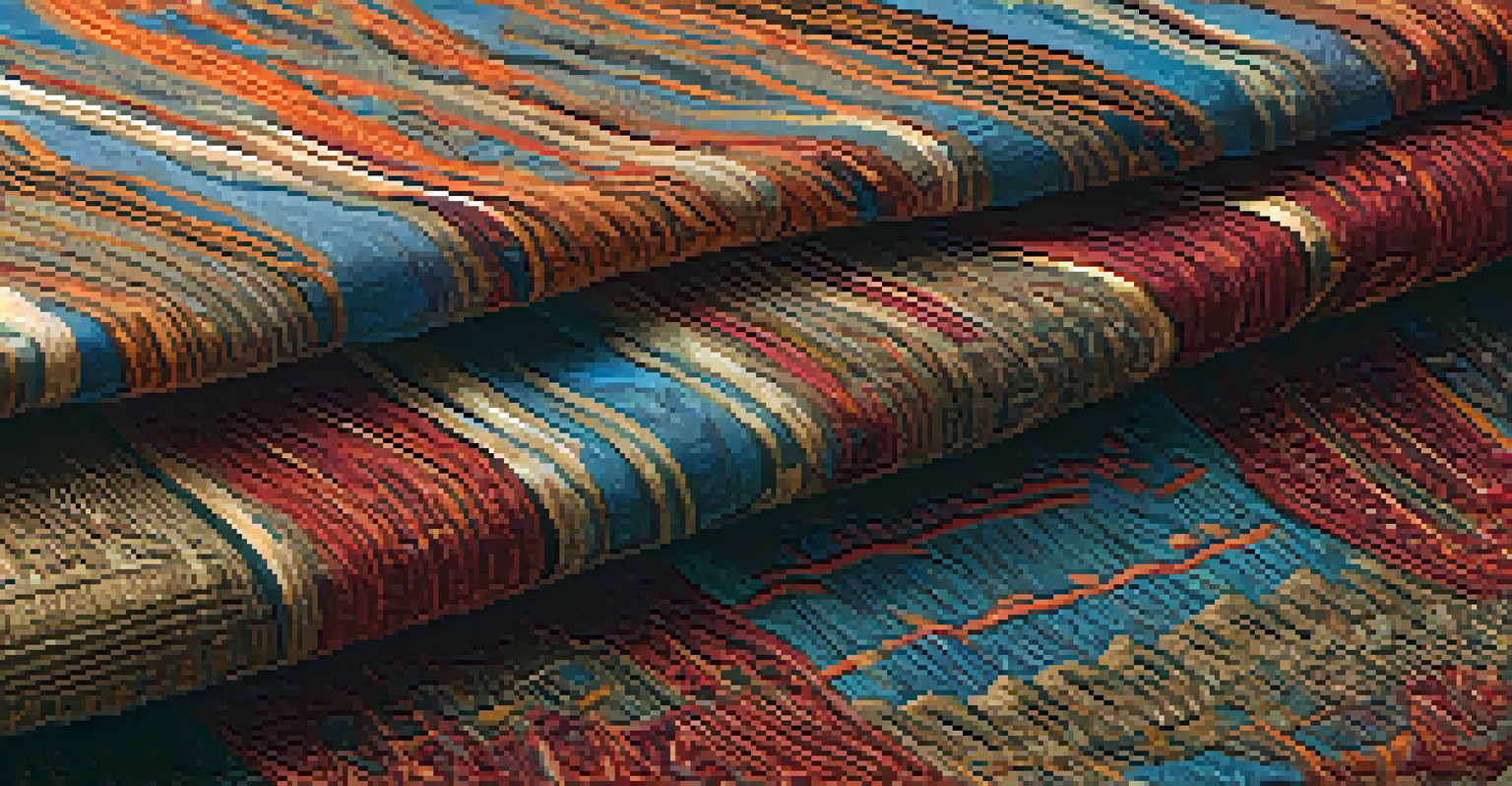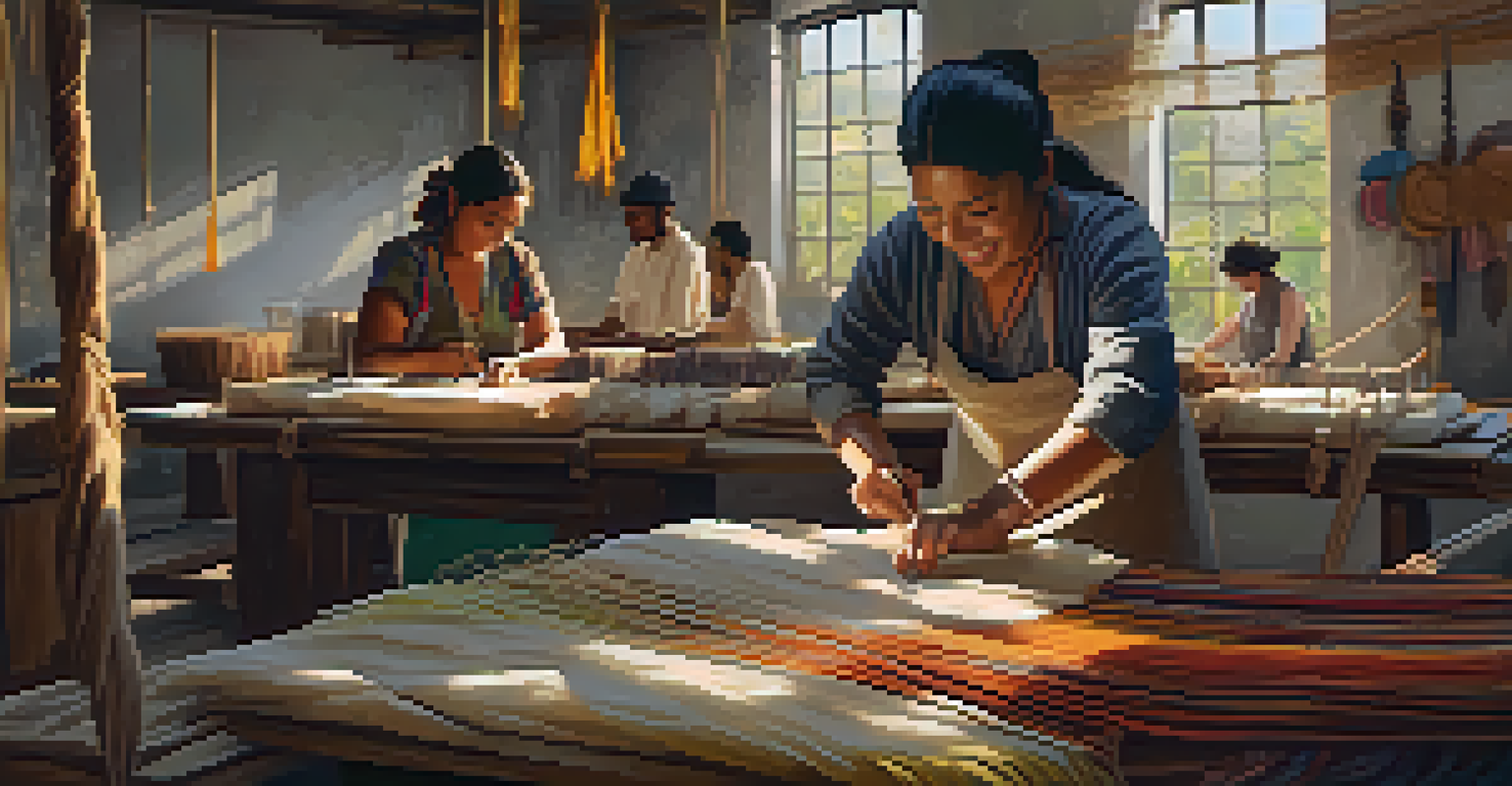Educating Consumers: The Benefits of Sustainable Fashion Choices

Understanding Sustainable Fashion: What Does It Mean?
Sustainable fashion refers to clothing and accessories produced in environmentally friendly ways. It emphasizes reducing waste, using renewable resources, and ensuring fair labor practices. By focusing on sustainability, brands aim to minimize their ecological footprint while providing stylish options for consumers.
Fashion is about dreaming and making other people dream. It is a way to express yourself, but it can also be a way to express your values, like sustainability.
For instance, many sustainable brands utilize organic materials, such as cotton grown without harmful pesticides. This not only benefits the environment but also results in healthier products for consumers. Understanding these terms helps you make informed choices when shopping.
Ultimately, sustainable fashion encourages a shift from fast fashion, which often prioritizes profit over planet. By understanding what sustainable fashion truly means, you empower yourself to make choices that align with your values.
Environmental Benefits of Choosing Sustainable Fashion
One of the most significant benefits of sustainable fashion is its positive impact on the environment. Traditional clothing production is notorious for its resource-intensive processes, contributing to pollution and waste. By opting for sustainable brands, you're supporting practices that reduce these harmful effects.

For example, sustainable fashion brands often use eco-friendly dyes and materials that require less water and energy to produce. This not only conserves resources but also results in cleaner waterways and reduced greenhouse gas emissions. When you choose sustainable fashion, you're making a conscious decision to protect the planet.
Sustainable Fashion Benefits the Planet
Choosing sustainable fashion helps reduce pollution and waste, supporting eco-friendly practices.
Additionally, many sustainable brands focus on recycling and upcycling materials, which helps combat the enormous waste generated by the fashion industry. This approach not only extends the life cycle of garments but also fosters a culture of conscious consumption.
Economic Advantages of Sustainable Fashion Choices
While sustainable fashion may initially seem more expensive, it often proves to be a wise investment in the long run. High-quality, sustainably made garments tend to last longer than fast fashion items, which quickly wear out. By purchasing fewer, more durable pieces, you can save money over time.
We have a responsibility to the planet and to future generations to make sure our industry is sustainable.
Moreover, supporting sustainable brands helps stimulate local economies. Many of these companies prioritize local production and fair labor practices, ensuring that workers receive fair wages and safe working conditions. This approach not only benefits the individuals involved but also promotes economic growth within communities.
As consumer demand for sustainable options increases, more brands are adopting these practices, leading to a more sustainable market overall. Your choices as a consumer can drive this change, encouraging companies to prioritize ethical practices.
Social Impacts of Sustainable Fashion: Fair Labor Practices
Sustainable fashion goes beyond environmental concerns to address social issues, particularly labor practices. Many sustainable brands are committed to ensuring fair wages and safe working conditions for their employees. By choosing these brands, you support ethical practices that prioritize worker rights.
For example, some companies collaborate with artisans in developing countries, providing them with fair compensation and opportunities for skill development. This not only empowers individuals but also helps preserve traditional crafts and cultural heritage. It's a win-win scenario for both consumers and producers.
Investing in Quality Over Quantity
Sustainable fashion items may have a higher upfront cost but offer long-term savings through durability.
When you choose sustainable fashion, you're not just making a style statement; you're also advocating for a more equitable global economy. Your purchasing decisions can help create a positive impact on the lives of workers around the world.
The Role of Consumer Education in Sustainable Fashion
Educating consumers about sustainable fashion is crucial in driving change within the industry. Many people may not be aware of the environmental and social issues tied to their clothing choices, making education an essential step. By raising awareness, we can empower consumers to make better decisions.
Workshops, social media campaigns, and informative articles can play a significant role in promoting sustainable practices. When consumers understand the benefits and implications of their choices, they are more likely to support brands that align with their values. This shift in consumer behavior can lead to a more sustainable fashion industry.
Ultimately, knowledge is power. By educating ourselves and others about sustainable fashion, we can collectively make a difference and contribute to a healthier planet and society.
Practical Tips for Adopting Sustainable Fashion Choices
Making sustainable fashion choices doesn't have to be overwhelming; there are simple steps you can take. Start by assessing your wardrobe and identifying items you truly love and wear often. This helps you understand your personal style and reduces impulse purchases.
Next, consider shopping second-hand or vintage. Thrift stores and online marketplaces offer unique pieces while promoting recycling and reducing waste. Plus, you'll often find high-quality items at a fraction of the cost, making it a win for both your wallet and the environment.
Empowering Ethical Labor Practices
Supporting sustainable brands promotes fair wages and safe working conditions for garment workers.
Lastly, support brands that prioritize sustainability and transparency in their practices. Look for certifications, read about their production processes, and ask questions. By being an informed consumer, you can make choices that align with your values and promote a more sustainable fashion industry.
The Future of Sustainable Fashion: Trends and Innovations
The future of sustainable fashion is bright, with numerous trends and innovations on the horizon. As technology advances, brands are exploring new materials and production methods that minimize environmental impact. For instance, some companies are developing fabrics made from recycled ocean plastics, turning waste into stylish clothing.
Additionally, the rise of digital fashion and virtual clothing is gaining traction. This innovative approach allows consumers to experience fashion without the environmental cost of physical production. By embracing these technologies, we can reduce waste while still expressing our unique styles.

With increasing consumer awareness and demand for sustainable options, the fashion industry is evolving. By choosing to support sustainable brands, you're not only making a difference today but also paving the way for a more responsible fashion landscape in the future.